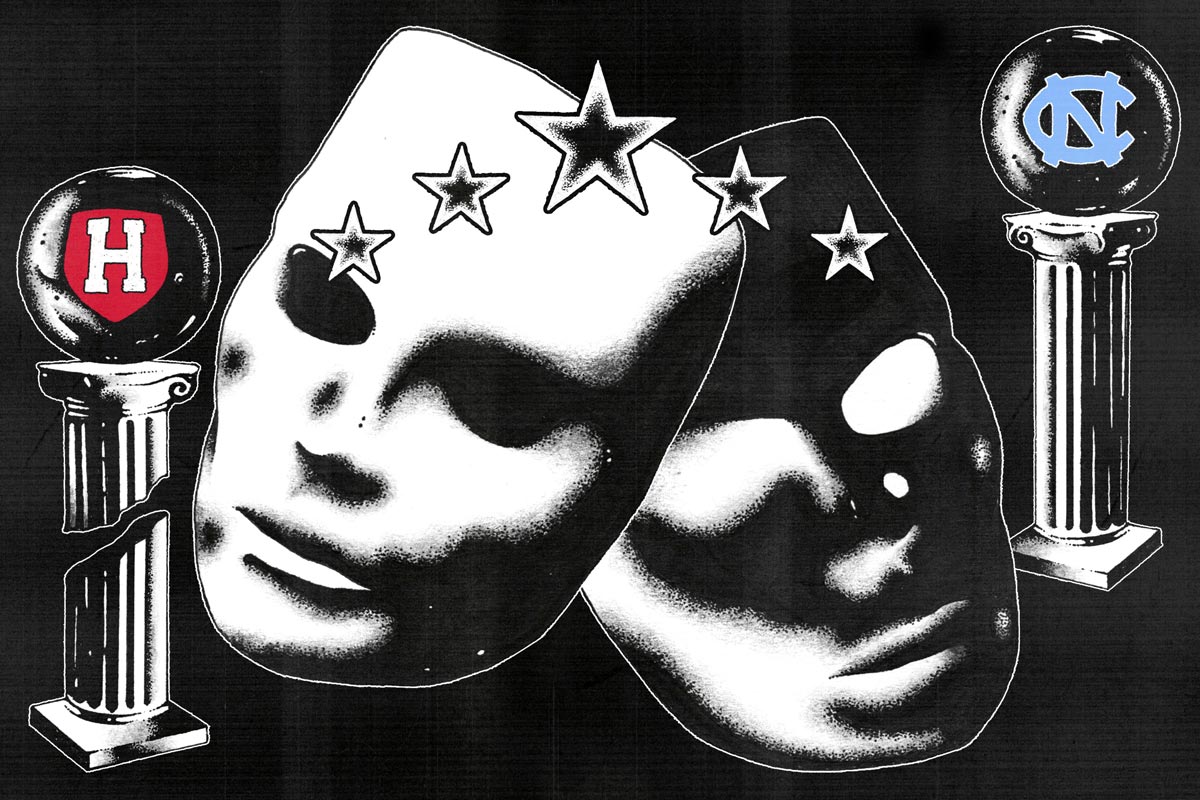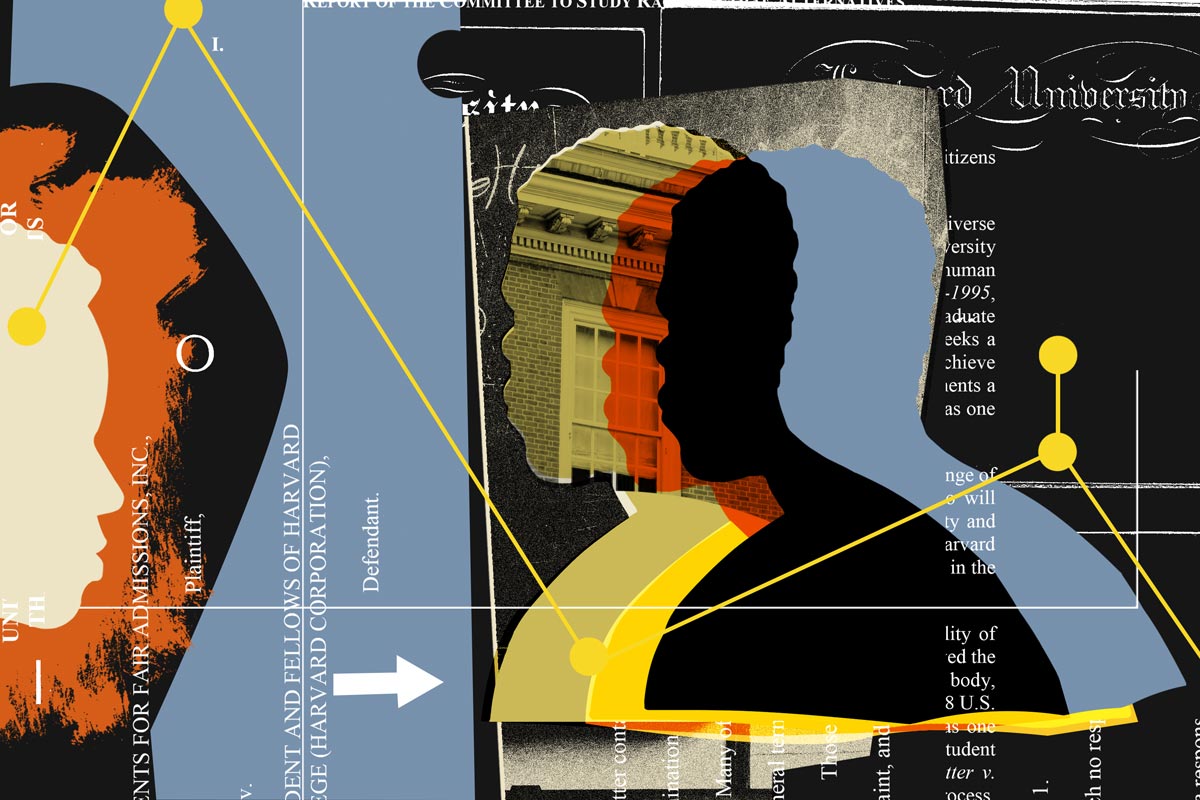THE FIGHT FOR AFFIRMATIVE ACTION
On Monday, Harvard University and UNC Chapel Hill will be the last line of defense between affirmative action and a hostile Supreme Court. The stakes transcend university admissions. The lawsuits targeting Harvard and UNC buttress a decades-long campaign to discredit antiracism itself. The goal, at bottom, is to reframe traditional civil rights remedies as a threat to civil rights.
Against this backdrop, onlookers might expect Harvard and UNC to zealously defend affirmative action. Onlookers will be disappointed. Harvard and UNC will defend their right to consider an applicant’s race, of course. But in the process, they will undermine the legal and moral case for race-conscious admissions.
Dominant narratives present affirmative action as a departure from otherwise neutral and unbiased processes. Harvard and UNC are uniquely positioned to disrupt this narrative and reframe affirmative action as a modest tool to counter white racial advantage. Neither has done so. One reason is that it would underscore a basic truth elite institutions often obscure: absent affirmative action, standard admissions regimes inevitably reward inherited race and class advantage, not academic talent and potential.
The lawsuits targeting Harvard and UNC buttress a decades-long campaign to discredit antiracism itself. The goal, at bottom, is to reframe traditional civil rights remedies as a threat to civil rights.
Compare what the universities actually say with what they could say. Harvard and UNC argue that they consider applicant race to ensure a racially diverse student body. They further claim that race, even if a consideration, has a limited impact on admissions. These arguments are understandable. On the law, the Supreme Court has reaffirmed that universities may employ narrowly tailored race-conscious policies that promote student body diversity. As for values, universities should prioritize racial diversity.
So what’s the problem? By defending their own policies on these terms, Harvard and UNC reinforce the widespread presumption that affirmative action corrupts an otherwise race-neutral process—they just believe the benefits (here, diversity) warrant the rupture. This might be defensible if affirmative action intervened against a process free from racial advantage. But Harvard and UNC know that is not the case. Still, they downplay and diminish the many sites of white racial advantage that drive admissions outcomes and shape campus life.
Consider the evidence at Harvard’s disposal. The plaintiff argues that Harvard discriminates against Asian Americans. Specifically, the plaintiff argues that implicit biases (a) infiltrate subjective assessments like Harvard’s Personal Rating and (b) benefit white applicants. Harvard disputes the allegations. In certain respects, this makes sense. The allegations threaten Harvard’s reputation and could expose the institution to legal liability. But evidence of anti-Asian bias reinforces the critical insight that ostensibly “colorblind” considerations do not ensure racial neutrality. To the contrary, the veneer of neutrality rewards white racial advantage.
Put differently, the plaintiff’s evidence calls for more affirmative action, not less. Harvard never uplifts this insight. To do so, the university would need only to invoke the plaintiff’s own words: “Incontrovertible evidence shows that Harvard’s admissions policy has a disproportionately negative impact on Asian Americans vis-a-vis similarly situated white applicants that cannot be explained on nondiscriminatory grounds.”
Harvard also willfully obscures the largest source of white racial advantage: its Legacy+ preferences, which reward the children of alumni and other privileged groups. It is hard to overstate the magnitude of this race/class bonus. Over a recent six-year year period, Harvard admitted more than 1,600 white students who would have been rejected but for their Legacy+ status. This number equals 33 percent of all white admits and exceeds all Black and Latinx admits from the same period.
By visually and rhetorically minimizing Legacy+ preferences’ outsized impact, Harvard reinforces the narrative that qualifications—not inherited advantages—determine its student body.
The problem goes beyond Harvard’s defense of a policy that privileges underqualified (but economically advantaged) white applicants over more deserving students of color. By visually and rhetorically minimizing Legacy+ preferences’ outsized impact, Harvard reinforces the narrative that qualifications—not inherited advantages—determine its student body. Harvard invites the conclusion that wealthy white students overpopulate its campus because they are the “best and brightest,” not because they enjoy the most accumulated race and class advantage. One might call this a feature, and not a bug. Were elite universities to highlight the anti-“meritocratic” nature of their own selection processes, it would compromise the institution’s own claim to legitimacy.
The omissions go further. Affirmative action opponents often cite standardized tests as the gold standard for objective measures of “merit.” Harvard and UNC could trouble this highly contestable claim. To begin, they could make the modest point that tests like the SAT better measure parental income than individual talent and potential. They might also highlight how decades of law and policy enabled white communities to extract and hoard the resources necessary to compile a competitive admissions file.
But Harvard and UNC could go further—even if they double down on the claim that “merit” should drive admissions decisions. Specifically, our defendants could marshal decades of scholarship that reveal how standardized tests systematically understate the true talent of students from negatively stereotyped racial groups. The cause is stereotype threat, which creates a cognitive “tax” and interferes with academic performance. As a result, tests like the SAT artificially inflate the relative abilities of white students. Harvard and UNC could thereby explain that if “merit” is the goal, numbers alone cannot get us there. But affirmative action, by accounting for flawed metrics that internalize and perpetuate white racial advantages, gets us closer.
Harvard and UNC make none of the above arguments. This occurs against a backdrop of institutional controversies following the mistreatment of Black and Latinx scholars including Nikole Hannah-Jones and Lorgia García Peña. Worse still, they have actively resisted third party efforts to more zealously defend their own policies. Fortunately, student intervenors in the UNC litigation will have an opportunity to weigh in during oral argument. The intervenors comprise a diverse group of high school and current UNC students of color. Although limited to ten minutes, the students will do what affirmative action’s formal defenders refuse to do: surface the white racial advantages that continue to shape university admissions and campus life. This will not be enough to save affirmative action. But it matters because it contests a resurgent narrative designed to legitimize racial inequality and discredit race-conscious remedies. Perhaps the dissent will take up the cause, and like the district court, note that UNC’s recent remedial “efforts have fallen short of repairing a deep-seated legacy of racial hostility and disrespect for people of color.”
Boston University School of Law Professor Jonathan Feingold’s scholarship explores the relationship between race, law, and the mind sciences. Feingold co-authored an amicus brief on behalf of race-conscious admissions at Harvard and UNC, and his work has been cited in U.S. Supreme Court amicus briefs defending affirmative action.



